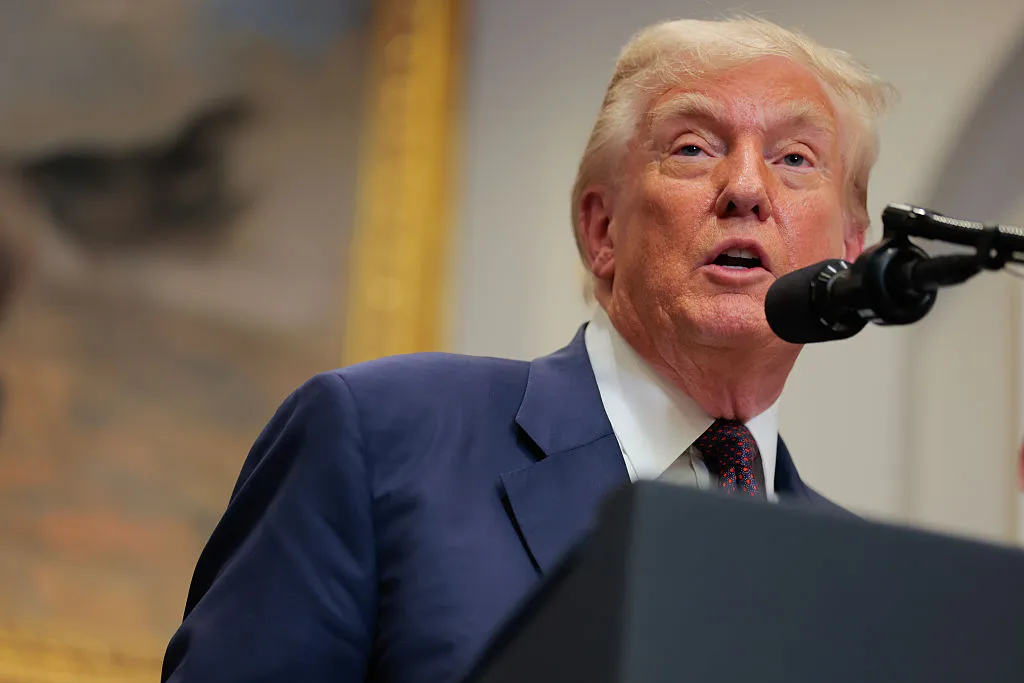Trump administration may not oppose state regulations on artificial intelligence.

Image Credits:Anna Moneymaker / Getty Images
The Trump Administration’s Stance on AI Regulation
The landscape of artificial intelligence (AI) regulation is evolving, with former President Donald Trump’s administration actively pushing for a unified federal standard. This movement was underscored by a recent social media post from Trump, stating the necessity for “one Federal Standard instead of a patchwork of 50 State Regulatory Regimes.” This stance suggests a desire for streamlined governance in the AI sector, aiming to reduce regulatory fragmentation among states.
Historical Context of AI Regulation
The push for a cohesive federal approach comes after a tumultuous legislative journey. Initially, a provision for a 10-year ban on state-level AI regulations was featured in Trump’s ambitious “Big Beautiful Bill.” However, this provision faced significant opposition in Congress and was ultimately removed in a remarkable bipartisan Senate vote of 99-1. The overwhelming rejection highlighted the complexities and varied perspectives on AI governance among lawmakers.
Executive Order and the AI Litigation Task Force
Emerging from the legislative backdrop, the Trump administration reportedly drafted a new executive order aimed at implementing an AI Litigation Task Force. This task force would focus on legally challenging state-level AI regulations through litigation. Additionally, federal broadband funding could be jeopardized for states that maintain contested AI laws. Such moves indicate a strategic effort to centralize authority over AI governance and mitigate divergent state laws.
Implications of the Proposed Executive Order
While the proposed executive order promises to streamline AI regulations nationally, it has also raised alarms within various political circles. Reports indicate that the order has currently been put on hold. Should it move forward, it could face significant backlash from various stakeholders, including Republicans who previously opposed a blanket moratorium on state regulation. This internal party dissent reflects broader concerns about the balance of power between state and federal governance in the realm of technology.
The Role of Silicon Valley in AI Regulation Debate
The topic of AI regulation has ignited debates far beyond political walls, extending deep into tech hubs like Silicon Valley. Industry leaders, including those within the Trump administration, have openly criticized companies that advocate for stronger AI safety measures. Notably, companies like Anthropic have come under fire for backing AI safety bills, including California’s SB 53. This division showcases the friction between promoting innovation and ensuring safety in an unmatched technology landscape.
Broader Reactions and the Future of AI Regulation
As discussions surrounding AI regulation heat up, the implications for the industry and consumers are vast. Advocates for more stringent regulations argue that reckless development could lead to unintended consequences, highlighting the critical need for robust safety measures. Conversely, opponents express concerns that excessive regulation might stifle innovation and hinder the U.S.’s competitive edge in the global tech arena.
The balancing act between safeguarding public welfare and fostering technological advancement remains a contentious issue. The uncertainty surrounding the future of AI regulation is not just a matter of political jockeying; it also has significant implications for how AI will evolve and be integrated into society.
Conclusion
The ongoing debate around AI regulation reflects the complex interplay of technology, governance, and market dynamics. As the Trump administration seeks to navigate this landscape, the proposed shift towards a federal standard could have lasting impacts. The need for clarity and consistency in AI governance is evident, but the path forward will require careful negotiation among lawmakers, technologists, and the public. The future of AI regulation hangs in the balance, waiting for a resolution that balances innovation with responsibility.
The discussion surrounding AI regulation is far from over. As stakeholders continue to grapple with these issues, the landscape will undoubtedly adapt, requiring vigilance and adaptability as new challenges and opportunities arise in the rapidly evolving world of artificial intelligence.
Thanks for reading. Please let us know your thoughts and ideas in the comment section down below.
Source link
#Trump #administration #fight #state #regulations





